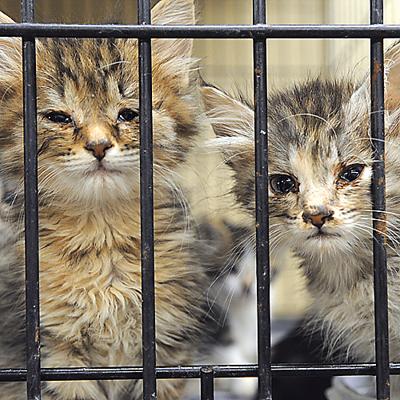At heart this is really a discussion about cat overpopulation in America and in the UK. Is there a cat overpopulation problem? The simple answer is, yes, because too many cats are killed at shelters because they are unwanted. However, this is a very complicated topic. Some people say that there isn’t a cat overpopulation problem. It’s simply a question of distributing the cats who are temporarily unwanted for various reasons. And others say that there is not a cat overpopulation problem per se because there are the homes where cats can be loved and looked after but conditions imposed, for example, by landlords on their leaseholders prevents this happening. Change that attitude and you have substantially resolved the so-called overpopulation problem.

Factors affecting adoption from shelters
One factor as to why cats are killed at shelters rather than adopted is the mentality of the adopters. It’s rather telling to look at the sort of cats which appeal to people at shelters. It’s no surprise to learn that cats under one year of age were adopted approximately four times more often than cats between one and two years of age. Also, these young kittens are adopted about five times more often than cats in the age bracket 3 to 5 and about 19 times more often than cats over five years of age.
Five years of age is not old but these cats are 19 times less likely to be adopted. That’s quite a stark statistic. People are not obsessed with adopting a kitten but they strongly favour it. This is because they like the appearance of a cute kitten. Are they being a kittle self-indulgent? Or is it because they want to raise a cat from kittenhood to adulthood? I think it’s more likely to be the former. Kittens are incredibly attractive and humans are driven by the visually attractive. They will purchase something which is aesthetically attractive and it doesn’t matter whether it’s a living creature or not.

To the best of my knowledge, all cats at American and UK shelters are spayed and neutered nowadays. At one time it appears not to been the case because in one study it was found that the sterilisation status of a cat influenced their decision. So, sterilised cats were preferred over sexually intact once.
Spayed females were over four times more likely to be adopted than intact females. Neutered males were almost 6 times more likely to be adopted than intact males. In an act of animal sexism, I would argue, it was found that neutered males were preferred by a factor of 1.56 over spayed females. And gender preference applies to intact males over intact females. People preferred by a factor of 1.17 the former over the latter.
So factors affecting the likelihood of a cat being adopted at the shelter include their age, sex, sterilisation status, fur colour, breed and the reason for the relinquishment of the cat to the shelter.

Yes, the colour of the fur counts, as we probably know. Once again this highlights the aesthetic appearance of a cat as to whether they are adopted or not. White cats are favourites. Therefore white kittens are top cats at shelters. Doesn’t this point to the preferences of women? Women tend to like light and bright colours as evidenced by their choice in car purchases. Men tend to go for black and grey and women tend to go for white and bright metallic colours in cars. We are seeing the same trend in cats.
Without in any way being sexist myself, I’m pretty confident that the decisions at cat shelters on adoption are made by women, predominantly. After white, pointed cats such as the Siamese-type cats and grey cats are also popular. At the other end of the spectrum, the least popular are brown or black cats. Predominantly brown or black cats were almost half as likely to be adopted as tabby cats.

When purebred cats are available at shelters they are twice as likely to be adopted as non-purebred cats (moggies). The Persian, being the best known purebred is the breed most likely to be adopted at a shelter. You also see Maine Coons at shelters but no doubt they are rare.
As to hair length, there appears to be no preferences as medium-length haired cats and long-haired cats have the same chance of adoption as shorthaired cats based on research that I have.

Another factor which has a bearing on whether a cat is adopted or not is how they were relinquished to the shelter. Sixty percent of cats placed for adoption at shelters were considered to be stray cats at the time they were handed to the shelter. The more common reasons for giving up a cat to a shelter reduced the likelihood of adoption. This probably is because the reasons stated might be that the cat had a behavioural problem which is bound to affect the likelihood of adoption. Stray cats have no known or recorded history and therefore no perceive behavioural problems. In addition to behavioural issues whether there is a history of illness will also affect adoption. The problem here is that these cats often don’t have behavioural problems. The environment under which they lived as provided by their previous owner caused the problems.
My conclusion?
The conclusion really is that adopters a shelter should focus less on aesthetic appearance and more on the real issues which are (1) the pleasure and reward of adopting an unwanted shelter cat, particularly an ugly one who is genuinely unwanted and (2) the character of the cat and (3) yes, the degree that the cat is unwanted should be a factor. You want a reward in heaven? Adopt, like some people do, the most unwanted cat in the state or in the city and you will have that reward both in life and in heaven.
SOME PAGES ON SHELTERS:

